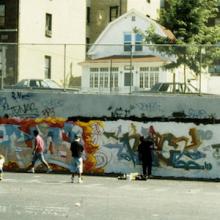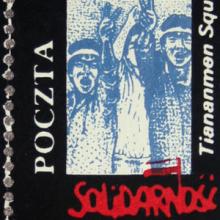Culture
Religious Freedom in the Soviet Union
By the summer of 1988, Mikhail Gorbachev's reform policies glasnost' (openness) and perestroika (restructuring) had begun to change the political landscape of the Soviet Union. The U.S. and Soviet Union had made considerable progress in limiting arms build-up through a series of negotiations.

Short Teaching Module: Children and Daguerreotypes (19th c.)
For historians, there are several ongoing debates about the periodization of childhood and its transformation over time. When did children become important and in what capacity? As economic contributors? As the focus of emotional attachment or as subjects prone sentimental idealization?

Short Teaching Module: Graffiti, Gender, and Youth (20th c.)
I use "graffiti art" – the unmediated writings, paintings, and drawings that began to appear in public spaces in New York, Philadelphia, and elsewhere on the east coast during late 1960s – in order to examine the: status of young people as valid historical actors and "citizens" relative to adults

Short Teaching Module: Codex Mendoza (16th c.)
In Mexico City, towards the middle of the 16th century, Nahuatl-speaking painters created the Codex Mendoza, one of the most lavish indigenous accounts of history and moral behavior known today. Across pages of expensive, imported paper, the painters of the C.
Polish Government reports on domestic unrest
Pessimism prevailed in this report prepared by the Polish Council of State assessing the general welfare of the country seven years after the national strikes that led to the Gdansk Agreements and four years after the lifting of martial law.
Conversations between the Catholic Church and the Polish Government
Poland was unique among Warsaw Pact countries in the degree of influence retained by the Catholic Church. But the church was also viewed as a powerful competitor to the state, and its leaders were among the first to be monitored and harassed during periods of social unrest.
Short Teaching Module: Russian Youth and Masculinity (19th c.)
Autobiographical writing as a rich source for the exploration of European childhood and youth is self evident; in many cases, it is one of the most nuanced ways to understand historical actors' earliest experiences.
Short Teaching Module: Letter by the Bratislava Five
This teaching module addresses a protest in Bratislava during the summer of 1989 aimed at commemorating the anniversary of the Warsaw Pact invasion by publicly laying flowers at various locations in Slovakia where citizens had been killed in 1968.
Miscellaneous Jokes: GDR Jokes C
George Orwell once wrote, "Every joke is a tiny revolution." In state-socialist societies that had (or have) totalitarian characteristics, individuals found clever ways to carve out areas of freedom for themselves.

Short Teaching Module: Remembering Tiananmen Square
Although China is located quite far from Eastern Europe, dissidents in Eastern Europe identified with the struggles by opposition leaders in China and used images of the 1989 Tiananmen Square uprising to reinforce memories of resistance in Eastern Europe.